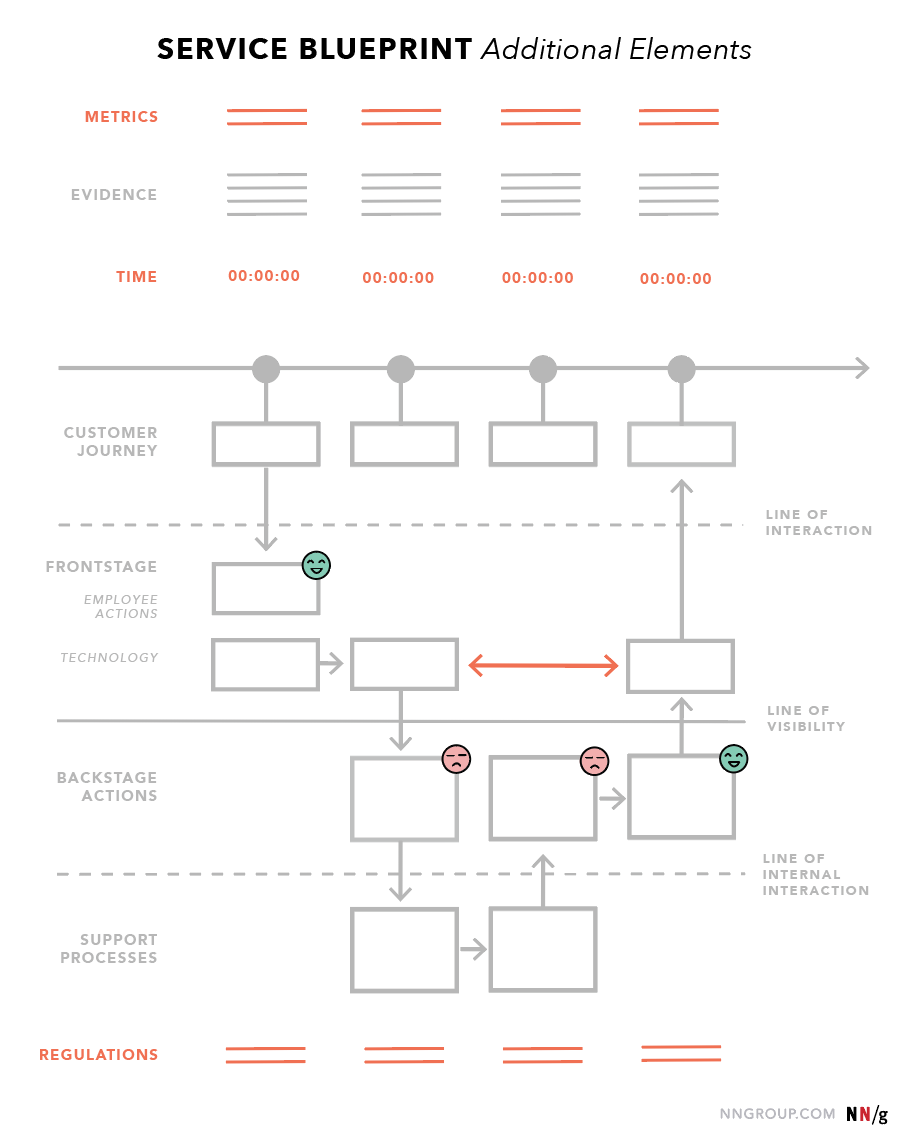Return to part one: Key Elements of a Service Blueprint
Blueprints can be adapted to context and business goals by introducing the additional elements as needed:
Arrows
Arrows are a key element of service blueprinting. They indicate relationships, and more importantly, dependencies. A single arrow suggests a linear, one-way exchange, while a double arrow suggests the need for agreement and codependency.
Time
If time is a primary variable in your service, an estimated duration for each customer action should be represented in your blueprint.
Regulations or Policy
Any given policies or regulations that dictate how a process is completed (food regulations, security policies, etc.) can be added to your blueprint. This information will allow us to understand what can and cannot be changed as we optimize.
Emotion
Similar to how a user’s emotion is represented throughout a customer-journey map, employees’ emotions can be represented in the blueprint. (Emotion is shown through the green and red faces in the example below.) Where are employees frustrated? Where are employees happy and motivated? If you already have some qualitative data regarding points of frustration (possibly obtained from internal surveys or other methods), you can use them in the blueprint to help focus the design process and more easily locate pain points.
Metrics
Any success metric that can provide context to your blueprint is a benefit, especially if buy-in is the blueprint’s goal. An example may be the time spent on various processes, or the financial costs associated with them. These numbers will help the business identify where time or money are wasted due to miscommunication or other inefficiencies.

Conclusion
Service blueprints are companions to customer-journey maps: they help organizations see the big picture of how a service is implemented by the company and used by the customers. They pinpoint dependencies between employee-facing and customer-facing processes in the same visualization and are instrumental in identifying pain points, optimizing complex interactions, and ultimately saving money for the organization and improving the experience for its customers.